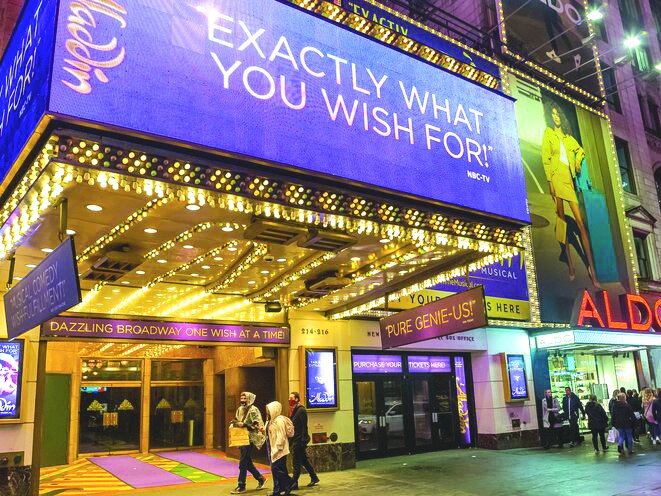Photo courtesy of Gothamist
New York Gov. Andrew Cuomo recently announced that certain entertainment venues can begin operating at reduced capacity beginning on Friday, April 2, according to ABC7. While the new regulation change applies to numerous art spaces, most Broadway shows will remain closed to the public. Certain theaters with more flexible spaces will host some live programming.
These changes come with quite a few restrictions. According to the New York Times, arts and entertainment events must operate at 33% capacity. Without testing, spaces permit 100 attendees when indoors and 200 people outdoors. If all the guests provide evidence of a negative test, these numbers change to allow 150 people inside with 500 guests outside, with masks required in all instances.
These adjustments come over a year after the start of the Broadway shutdown on March 12, 2020.
Despite excitement about resuming live entertainment in New York, many have reservations about the financial impact. Broadway theaters in particular are designed to operate at 100% capacity, not 33% capacity. Financially, it is difficult for theaters to pay their full staff without having a large portion of the audience in attendance.
The modifications needed for pandemic safety also put a monetary strain on arts institutions. Many theaters may have to rearrange backstage and onstage spaces to allow for social distancing. Others may opt to test their cast, musicians and crew on a regular basis – all financial considerations that did not exist for the old Broadway.
Broadway also must deal with the question of attendance. In the pre-pandemic era, much of the audience consisted of international tourists. Now, with travel restrictions in place in both the United States and other countries, a good portion of the ticket sales will simply not exist. Even with an American audience, fear of COVID-19 and cautions about spreading the virus will remain prevalent for a long time after any official reopening.
Other concerns, which Broadway producers outlined in interviews with Deadline, include in-theater logistics. Mara Isaacs, whose credentials include producing the Tony-award-winning musical “Hadestown,” said, “I think the challenge is actually what happens at intermission. What do you do with the bathroom line?” It is easy for management to control what happens backstage and onstage regarding the pandemic, but normal theater-going concerns still exist. How will audience members enter and exit in a safe manner?
Even though it seems there are more questions than answers about what Broadway will look like this year, the need to reopen art venues remains. Broadway alone employs around 100,000 New Yorkers while drawing in millions of dollars in travel and entertainment related revenue, according to PBS.
On a social level, recordings of live shows are not the same as sitting in a seat as the house lights dim over a hushed audience. Actors and audience members alike note the impact of losing the live aspect of entertainment. Regardless of the challenges or of how long the process takes, when the theater doors open, people will be there to enjoy the show.







